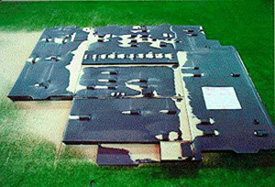SNOW AND ICE STUDIES
 Snow loads, like other environmental loads, exhibit marked variability over large geographic regions due to climatic differences. Within each region, considerable variations occur from roof to roof and from winter to winter. Differences in roof snow loads also result from differences in the aerodynamic, thermal and structural characteristics of roofs, the overall exposure to wind action and the aerodynamic influence of specific nearby buildings. Designers, faced with unusual situations, are prudent to consider the possibility of experiencing snow loads which differ from code values either in magnitude and/or distribution. Sliding snow and ice from inclined roofs and overhangs also constitute potential hazards for pedestrians. The frequency and amounts of these snow hazards can be estimated from historical climatic records and numerical simulation techniques. Snow loads, like other environmental loads, exhibit marked variability over large geographic regions due to climatic differences. Within each region, considerable variations occur from roof to roof and from winter to winter. Differences in roof snow loads also result from differences in the aerodynamic, thermal and structural characteristics of roofs, the overall exposure to wind action and the aerodynamic influence of specific nearby buildings. Designers, faced with unusual situations, are prudent to consider the possibility of experiencing snow loads which differ from code values either in magnitude and/or distribution. Sliding snow and ice from inclined roofs and overhangs also constitute potential hazards for pedestrians. The frequency and amounts of these snow hazards can be estimated from historical climatic records and numerical simulation techniques.
The Alan G. Davenport Wind Engineering Group offers physical model studies and numerical methods as effective tools for evaluating the influence of temperature, solar radiation, heat loss from the building and the effects of wind and rain on the accumulation and redistribution of snow on roofs and areas susceptible to sliding snow and ice hazard.
|